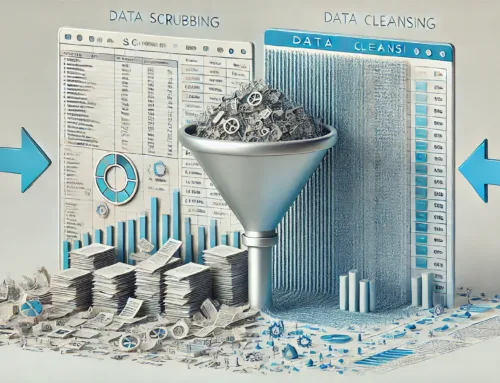You may not be aware that data scrubbing involves more than just removing duplicate entries. Did you know that by following five best practices in data scrubbing, you can significantly enhance the quality and reliability of your data? From auditing to error correction, each step plays a crucial role in maintaining data integrity and ensuring informed decision-making. Stay tuned to discover the essential best practices that can revolutionize how you handle data cleansing tasks.
Data Auditing
When auditing your data, start by defining clear objectives for the process. Data auditing involves assessing data accuracy, ensuring data validation, maintaining data integrity, and performing data profiling. To ensure data accuracy, verify that the information is correct, complete, and consistent. Conduct data validation checks to guarantee that the data meets the specified requirements and standards. Maintaining data integrity is crucial to prevent unauthorized access, data corruption, or loss. Implement data profiling techniques to analyze the quality, structure, and content of your data.
During the auditing process, focus on identifying discrepancies, anomalies, and inconsistencies in the data. Use various tools and methodologies to validate the accuracy of the data and ensure its integrity. By establishing clear objectives for data auditing, you can effectively evaluate the quality of your data and make informed decisions based on reliable information. Remember that data auditing is a continuous process that requires regular monitoring and updates to maintain the integrity and quality of your data.
Data Consistency
Ensuring data consistency is paramount in any data management strategy. Consistent data ensures that information is reliable and accurate for decision-making processes. Here are key considerations for achieving data consistency:
- Data Validation: Implement robust data validation processes to ensure that the data entered into the system meets specific criteria and adheres to predefined standards. This step helps in detecting any inconsistencies or errors at the point of entry.
- Data Integrity: Maintain data integrity by ensuring that the information remains accurate and reliable throughout its lifecycle. Implement measures to prevent unauthorized access, data corruption, or data loss which can compromise consistency.
- Data Cleansing: Regularly perform data cleansing activities to identify and rectify inconsistencies, errors, and redundancies within the dataset. This process involves removing or updating inaccurate, incomplete, or irrelevant data to enhance data accuracy and consistency.
Data Completeness
How crucial is it to guarantee complete data within your organization’s database? Data completeness is fundamental for ensuring data integrity and accuracy. Incomplete data can lead to errors in analysis, decision-making, and reporting. To maintain data completeness, implementing robust data validation and profiling processes is essential.
Data validation involves checking data for accuracy and reliability. By setting validation rules, you can ensure that only accurate and complete data is entered into the database. Additionally, data profiling allows you to analyze the quality and completeness of your data. This process helps identify missing or inconsistent data, enabling you to take corrective actions to enhance data completeness.
Incomplete data not only hampers the reliability of your database but also impacts the overall efficiency and effectiveness of your organization. By prioritizing data completeness and employing data validation and profiling techniques, you can enhance the quality of your data and make informed decisions based on accurate information.
Data Relevancy
Is data relevancy a key consideration in your organization’s data management strategy? Ensuring that the data you collect and retain is not only accurate and precise but also relevant is crucial for maintaining high data quality and integrity. Here are some key points to consider when evaluating data relevancy:
- Data Accuracy: Verify that the data being captured is correct and up-to-date to ensure its relevancy to current operations and decision-making processes.
- Data Precision: Focus on collecting data that is specific and detailed enough to serve its intended purpose effectively, avoiding unnecessary information that could clutter your datasets.
- Data Quality and Integrity: Uphold high standards for data quality and integrity by regularly reviewing the relevancy of the information being stored, removing any outdated or irrelevant data that could compromise the overall accuracy and trustworthiness of your database.
Error Detection and Correction
Data relevancy in your organization’s data management strategy sets the foundation for effective decision-making and operational efficiency. Error detection and correction play a crucial role in ensuring the accuracy of your data. Implementing robust data validation mechanisms and automation tools can help identify and rectify errors in your datasets promptly. By integrating data cleansing processes into your workflows, you can enhance the overall quality of your data, leading to more reliable insights and informed decision-making. Automated error detection systems can streamline the identification of anomalies, while automated correction mechanisms can swiftly address inaccuracies, minimizing manual intervention and reducing the risk of human errors. Prioritizing error detection and correction in your data scrubbing practices is essential for maintaining data accuracy and integrity, ultimately improving the effectiveness of your organization’s data-driven initiatives. By following best practices in error detection and correction, you can optimize the reliability and usability of your data assets.
Frequently Asked Questions
How Can Data Scrubbing Impact Data Privacy and Security?
Enhancing data privacy and security, data scrubbing benefits by removing sensitive info. However, overscrubbing can lead to data loss or compromise. Balancing thorough scrubbing with privacy concerns is key to safeguarding sensitive information effectively.
What Are the Potential Risks of Over-Scrubbing Data?
When you over-scrub data, you risk compromising data accuracy and integrity. Excessive cleansing can lead to loss of critical information, skewing analysis results, and hindering decision-making processes. Balance is key to maintaining data quality.
Is There a Recommended Frequency for Data Scrubbing?
Regularly scrubbing your data ensures high data integrity. Compliance requirements may dictate the frequency. For example, a financial institution might scrub data daily to adhere to regulatory standards. Evaluate your specific needs for optimal results.
How Does Data Scrubbing Affect Data Analytics and Reporting?
Data scrubbing significantly impacts data analytics and reporting by enhancing data quality and accuracy. It ensures that the information analyzed and reported is reliable, consistent, and error-free, leading to more informed decision-making and improved business outcomes.
What Are the Best Tools and Software for Data Scrubbing?
When considering data scrubbing tools and software, focus on their compatibility with your data sources and formats. Look for features that streamline data scrubbing techniques. Choose tools that offer automation to enhance data scrubbing benefits.




